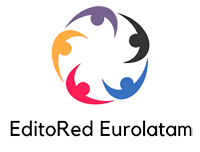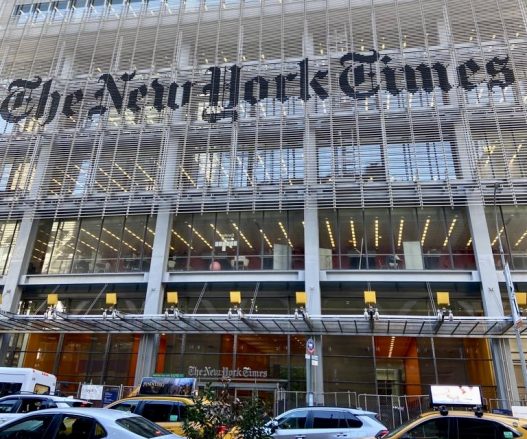
X-RAY OF A GIANT: THE NEW YORK TIMES
This text was published by the magazine Hora de Cierre, of the Inter American Press Association, IAPA, with whose authorization we reproduce it here.
————
The following is a talk given by Michael Greenspon, global director of Licensing and Print Innovation at The New York Times and former president of the Inter American Press Association (IAPA), during the International Media Meeting held on May 2 in Santiago, Chile, organized by the National Press Association of Chile (ANP).
“As we approach a hundred journalists murdered in the Middle East, and yet another journalist was killed last week in Mexico, World Press Freedom Day and this meeting are more important than ever.
But I’m not here today to talk about the continuing attacks on the media, but about the success of The New York Times business model because, to quote Ben Thompson of Stratchery, “great journalism needs a great business model.”
Let’s return briefly to the 2008/2009 financial crisis.
In the January/February 2009 issue of The Atlantic, in an article ominously titled “End Times,” Michael Hirschorn posited that the Times was on the verge of collapse.
It had lost 30% of its advertising business the previous year. We had to pay off $400 million in debt with only $46 million in cash. Our debt had been relegated to junk status and it wasn’t clear we could pay it off.
Now fast forward to March 2020, just before the pandemic. Ben Smith had just left BuzzFeed News, which he had founded, to join the Times as a media columnist. We had also recently hired the founding editors of Vox and Recode.
In his debut column, Ben described his Times as a “digital behemoth” and posed a very different question than The Atlanticcontemplated a decade earlier: Is The New York Times becoming a monopoly?
The Times had no debt and nearly $750 million in cash. We had three times as many subscribers as at the peak of our circulation and by far the largest audience in our history.
So how did we go from “end times” to “digital giant” in a decade? It started with a decision by Arthur Sulzberger Jr. our then publisher and president and father of our current publisher and president.
What did you do?
Instead of trying to climb out of the abyss, as so many others have done, we continued to invest in what makes the Times different and special: our journalism.
That meant two things.
– First, we sold everything that wasn’t directly related to our namesake newspaper and its journalism: our magazine group, the Boston Globe, our television networks and our involvement with the Boston Red Sox. Everything that was not tied to the success of the Times was divested.
– Second, we opposed the widespread belief that information should be free. We took a stand and said that good journalism was worth paying for and, in 2011, we launched a digital paywall.
Which brings us to the first of The Times’ five transition themes, from The Times End to Digital Giant: Make something worth paying for.
It’s hard to remember how deeply unpopular the paywall decision was both within the company and around the world. Headline after headline berated us for the decision, with media columnist Michael Wolff suggesting that it would be better to fire our president than to charge for content.
Two years later, in 2013, the paywall was doing reasonably well, certainly better than anyone expected. We had 500,000 digital subscriptions.
We were taking digital seriously, determined to find our place in an evolving news ecosystem. But we were still very much defined by the print newspaper that still provided the vast majority of our revenue and set our daily pace.
We were a newspaper with a digital presence, not a digital news organization with a print newspaper. In other words, we were changing, but not radically, and the danger was being successful enough to cling to the old ways of doing things.
It looked like that was going to be our fate. However, around that time we had a stroke of luck that at the time seemed anything but luck: the leak of the Innovation Report.
It was a crisis, but also a blessing, because it meant that we couldn’t hide from the report’s findings: that, while we were winning in journalism, we were falling behind in the art and science of getting that journalism to readers.
This brings me to the second theme: make the hard decisions about the business model and give them time.
If the introduction of the paywall was the first radical change, it could not and would not be the last.
So we made four big contrarian decisions and bet on them:
1. First, we had to become a mostly digital business.
2. Second, we were a subscription business first and would make decisions accordingly.
3. Third, we would be a destination and deserve direct relationships, which means we would not be primarily programming for other people’s platforms.
4. And finally, if we did those things well, we would ultimately strengthen our other revenue streams, such as ads.
Those four decisions led us to the following:
● from a business that was 30% digital to one that is now a substantial majority digital,
● to one where subscriptions are now three-quarters of our revenue.
● to one where we have 10.4 million subscribers and growing,
● and our journalism is more ambitious than ever, and accessible in a growing number of formats.
The next two topics are about the How:
Don’t let tradition stifle innovation.
The New York Times is 173 years old. My family has controlled it for the past 128 years. Tradition is very strong at the Times, and no tradition is stronger than the primacy of the newspaper and its native format, text articles.
So we have to try very hard to adopt the mindset that we are not in the daily newspaper business, but in the 24/7 truth and understanding business.
Two examples:
The first may seem quaint, but it shows the extent to which our news business has changed.
For decades, when you published your first news story in A1, you received the page plate from the printer to commemorate the occasion.
Earlier this year, we started a new tradition called the Trifecta, which recognizes a reporter whose story is so important that it appears in The Morning, our flagship daily newsletter; in The Daily, our Podcast; and at the top of our digital home pages. Together, these surfaces reach many, many millions more people than the front page of the newspaper ever did.
And it’s not just that they reach a much wider audience, it’s how they do it. The Daily and The Morning deliver the news in an intimate, conversational style – more like a friend telling you a story – than the typical newspaper article that pretends to sound like it’s coming from an institution.
I bring this up because part of making tough business decisions is knowing when to take something back and how to learn from it. In 2016, after two years, we shut down our app, NYT Now. This was a big bet for us and was getting positive reviews, but it wasn’t scaling the way we needed it to. However, those positive reviews were about that intimate, conversational style that has found a home not just in The Daily and The Morning, but across the Times.
Launching a full live journalism experience helped us grow our audience, not only because it helped us become more accessible, but also because it answered a real user need.
That brings me to the fourth theme that helped us get to where we are today: To change the business, we had to change the way we work.
Ten years ago, the Times was a very difficult place to develop products.
There were a lot of competing interests around what we needed a user to do on a page, and most of our business talent was in the commercial functions of selling and marketing subscriptions and ads.
But to compete for consumer engagement, the product itself had to become the primary driver of the business.
So most of our business work focused on building software: the experiences that help people find our journalism and interact with it. To do that, we had to reorganize much of the business, breaking down the traditional silos of a legacy company to enable cross-functional, goal-based, Silicon Valley-style work.
Today, our business is much more like Spotify or Netflix than a traditional newspaper company.
Which brings me to the final theme: we have to lead with ambition, because the work we are doing – we and everyone in this room – matters.
It irritates us to no end that the seventh largest streamer – Peacock or, perhaps, Paramount Plus – has three times as many paying subscribers as we do.
Today we’re aiming big: to be the essential subscription for every curious person who wants to understand the world and relate to it.
Our plan to achieve this includes:
● remaining a world-class news destination;
● offering high-quality lifestyle products in really big spaces where a lot of people spend a lot of time;
● and putting all of that together in a package that makes us indispensable in the daily lives of millions and millions of people.
At its core, it’s not much different from what we set out to do a decade ago: create products so good, so valuable, that people will seek them out and rely on them, regardless of how the information ecosystem changes.
We’ve come far, but the achievements are fragile and the challenges remain intense:
● we continue to derive much of our revenue from print, which is in structural decline.
● and much of our revenue comes from advertising, which is subject to all sorts of forces beyond our control, the latest of which is that advertisers don’t want to advertise alongside news in a polarized age.
● more profoundly, we exist in an ecosystem dominated by the largest and most powerful companies the world has ever known, and we get less traffic from them every day.
● and that’s even before we get to generative AI, which seems currently on its way to creating an information ecosystem that returns answers to queries, rather than opening paths to the publishers who did the hard and expensive work trying to find those answers.
In this context, we rely on our broad portfolio of products to attract new people to the Times.
News is and always will be at the center of what we do: it is the sun of our solar system.
It drives most of our business and provides us with a gigantic audience that returns day after day. It also lends authority and confidence to the entire company.
But our bet is for us to be essential to every person who plays Wordle or Connections, who follows Arsenal on The Athletic, who chooses their mattress through Wirecutter, or who makes any of the many lasagna recipes our Cooking app has tested and, ultimately, to experience the high-quality independent journalism for which the Times is known.
Thank you very much.”



